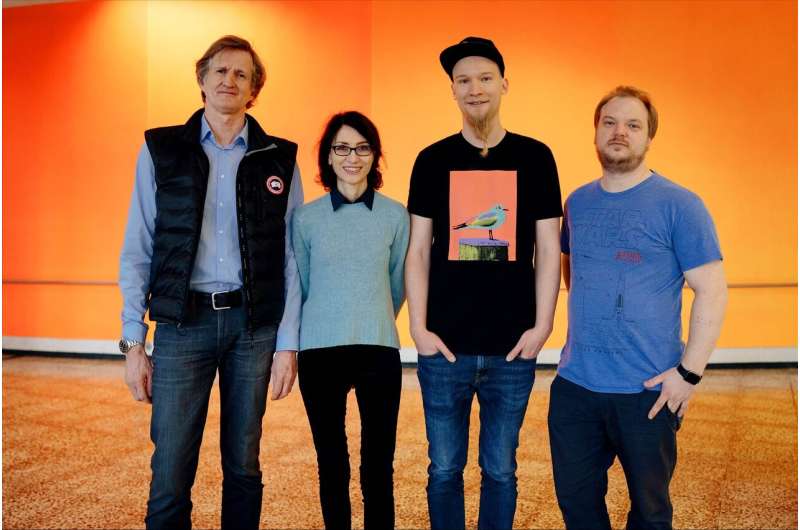Professor Jörg Tatzelt, Professor Konstanze Winklhofer, Nikolas Furthmann and Dr. Verian Bader (from left) belong to the team of authors of the publication. Credit: RUB, Kramer
The Parkin gene protects nerve cells against functional impairment and cell death. It particularly ensures that mitochondria, cell organelles that are responsible for energy production, remain intact and that damaged mitochondria are removed. PACRG is located next to the Parkin gene in the genome. Both genes share what is called a promotor, which regulates the expression of the genes. Parkin and PACRG are thus expressed in a similar pattern.
"Little has been known about PACRG so far, so we investigated what functions this gene has," says Konstanze Winklhofer. Her team found that, unlike Parkin, PACRG has no influence on the elimination of damaged mitochondria, but, like Parkin, is able to protect nerve cells from cell death.
Parkin and PACRG regulate a signaling pathway of the innate immune system
Further investigations into the mechanism of action showed that PACRG regulates a signaling pathway that is stimulated by tumor necrosis factor (TNF). This results in the activation of the transcription factor NF-κB, which ensures the increased formation of pro-survival proteins. Both Parkin and PACRG have an effect on an essential protein complex of this signaling pathway, called Lubac (linear ubiquitin chain assembly complex). Lubac is required for efficient signal transduction by modifying components of the NF-κB signaling pathway with linear ubiquitin chains.
The TNF-NF-κB signaling pathway not only regulates cell death but also plays an important role in the innate immune system. It prevents the spreading of certain bacteria that invade host cells, such as salmonella, linked to foodborne infections, or mycobacteria, which cause tuberculosis or leprosy. "Interestingly, sequence variations in the Parkin and PACRG genes have been described that lead to an increased susceptibility to these bacterial infections and are associated with severe courses of salmonella or mycobacterial infections," explains Konstanze Winklhofer. The current findings thus provide a plausible explanation for these observations and confirm that there are interfaces between the nervous system and immune system. Their protagonists or antagonists could be suitable targets for therapeutic interventions.
More information: Jens Meschede et al. The parkin-coregulated gene product PACRG promotes TNF signaling by stabilizing LUBAC, Science Signaling (2020). DOI: 10.1126/scisignal.aav1256
Journal information: Science Signaling
Provided by Ruhr-Universitaet-Bochum






















